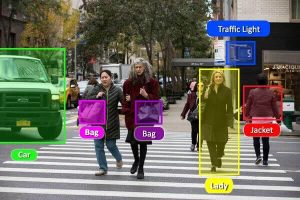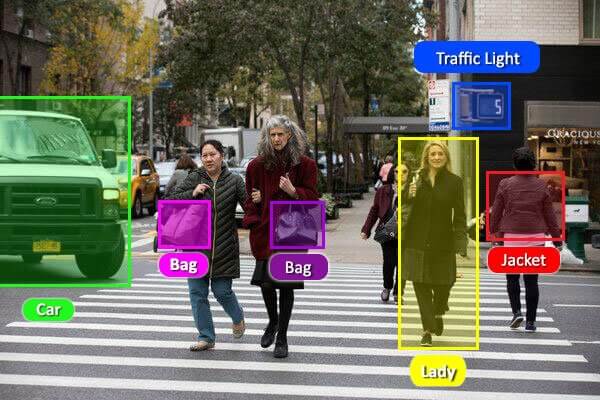
The world’s economy will profit from the remarkable advancements provided by AI and machine learning, two of the fastest-growing technologies.
But to develop such systems, a large amount of image labeling is necessary to teach the computers to recognize what we want them to look for. For the raw data to be used by machines, this training data has to be annotated by humans. In its most basic form, data annotation is this.
Data annotation is essential for AI initiatives in all industries and any project using machine learning must include it.
Services for data annotation provided by Anolytics
Anolytics aims to augment, annotate, and label data accurately, securely, and efficiently by involving humans in the process. Having a rich background in AI, machine learning, and data processing, they are uniquely qualified to provide industry-specific workforce solutions for data annotation & labeling.
A model must be taught to comprehend specific data to decide and act.
Data categorization and image labeling for AI applications are known as data annotation. Training data must be correctly classified and annotated for a particular use case.
Business organizations may create and enhance AI solutions using high-quality, human-powered data annotation. Consequently, there is a better customer experience solution that includes chatbots, relevant search engine results, computer vision, speech recognition, and product suggestions.
The following are the main categories of data:
1. Text Annotation
One of the main areas of AI research and development is natural language processing (NLP). The effectiveness and productivity of several NLP technologies, including chatbots, automatic voice recognition, and sentiment analysis software, have increased in innumerable enterprises worldwide. Recent advances in NLP even have the potential to allow speech-impaired persons to freely interact with those around them and automated voice recognition technology. However, these great technologies would not be conceivable without text annotation and there are several companies in the market that offer image annotation outsourcing services.
2. Audio Annotation
Speech data is time-stamped and then transcriptionally annotated. This includes the transcription of particular intonation and pronunciation as well as the determination of the speaker’s language, dialect, and demographics.
Also Read: How do We Annotate an Image
Each use case is unique, and some call for a particular strategy. One such use case is the tagging of aggressive speech signs and non-speech noises like glass shattering for use in security and emergency hotline technology applications.
3. Image Annotation
A variety of applications require image annotation. It encompasses machine learning techniques to decode pictures, robotic vision, facial recognition, and computer vision.
To train these solutions, the photographs must have metadata in IDs, captions, or keywords.
Several use cases demand enormous numbers of annotated pictures, from computer vision systems used by self-driving cars and machines that select and sort products to healthcare applications that automatically identify medical disorders.
By successfully training these systems, image annotation enhances precision and accuracy.
4. Video Annotation
The secret to successful machine learning is human-annotated data. Just said, regulating subjectivity, comprehending purpose, and dealing with ambiguity are human abilities that machines simply lack.
For instance, obtaining an agreement requires input from many individuals when assessing if a search engine result is relevant. Humans must recognize and annotate specific data, such as highlighting all the pixels in a picture, including trees or traffic signs, to train a computer vision or pattern recognition system.
Using this structured data, machines may learn to spot these links in testing and production.
How Anolytics process data
Any potential data annotation outsourcing firms you consider working with must have a strict quality assurance procedure.
Here is how we can make sure that all data annotation work is accurate:
1. Initial Assessment – To fully comprehend the project needs, we carefully study all project material and speak with key stakeholders and technical experts.
2. Verification and Validation – To ensure the required level of accuracy is maintained, we test a representative sample of all the work completed so far throughout the project.
3. Quality Review – To ascertain the correctness percentage of all the work accomplished, we painstakingly review important project variables.
4. Repeated Quality Training – If any work was not completed correctly, we provide the data annotator(s) extra training to ensure they are aware of the criteria.
Also Read: Best Text Annotation Datasets and Tools for Computer Vision to Watch Out For In 2022
Conclusion
As we all know, preparing training data and image labeling is one of the tedious tasks involved in machine learning.
Although involving humans in performing tasks like labeling unstructured data is frequently a necessary step in creating training data for your model, its laborious and time-consuming nature makes it a job that is not ideal for small teams of highly qualified & well-paid data scientists or engineers. This is why many businesses outsource image annotation projects to take advantage of cheaper labor on a large scale.


The world’s economy will profit from the remarkable advancements provided by AI and machine learning, two of the fastest-growing technologies.
But to develop such systems, a large amount of image labeling is necessary to teach the computers to recognize what we want them to look for. For the raw data to be used by machines, this training data has to be annotated by humans. In its most basic form, data annotation is this.
Data annotation is essential for AI initiatives in all industries and any project using machine learning must include it.
Services for data annotation provided by Anolytics
Anolytics aims to augment, annotate, and label data accurately, securely, and efficiently by involving humans in the process. Having a rich background in AI, machine learning, and data processing, they are uniquely qualified to provide industry-specific workforce solutions for data annotation & labeling.
A model must be taught to comprehend specific data to decide and act.
Data categorization and image labeling for AI applications are known as data annotation. Training data must be correctly classified and annotated for a particular use case.
Business organizations may create and enhance AI solutions using high-quality, human-powered data annotation. Consequently, there is a better customer experience solution that includes chatbots, relevant search engine results, computer vision, speech recognition, and product suggestions.
The following are the main categories of data:
1. Text Annotation
One of the main areas of AI research and development is natural language processing (NLP). The effectiveness and productivity of several NLP technologies, including chatbots, automatic voice recognition, and sentiment analysis software, have increased in innumerable enterprises worldwide. Recent advances in NLP even have the potential to allow speech-impaired persons to freely interact with those around them and automated voice recognition technology. However, these great technologies would not be conceivable without text annotation and there are several companies in the market that offer image annotation outsourcing services.
2. Audio Annotation
Speech data is time-stamped and then transcriptionally annotated. This includes the transcription of particular intonation and pronunciation as well as the determination of the speaker’s language, dialect, and demographics.
Also Read: How do We Annotate an Image
Each use case is unique, and some call for a particular strategy. One such use case is the tagging of aggressive speech signs and non-speech noises like glass shattering for use in security and emergency hotline technology applications.
3. Image Annotation
A variety of applications require image annotation. It encompasses machine learning techniques to decode pictures, robotic vision, facial recognition, and computer vision.
To train these solutions, the photographs must have metadata in IDs, captions, or keywords.
Several use cases demand enormous numbers of annotated pictures, from computer vision systems used by self-driving cars and machines that select and sort products to healthcare applications that automatically identify medical disorders.
By successfully training these systems, image annotation enhances precision and accuracy.
4. Video Annotation
The secret to successful machine learning is human-annotated data. Just said, regulating subjectivity, comprehending purpose, and dealing with ambiguity are human abilities that machines simply lack.
For instance, obtaining an agreement requires input from many individuals when assessing if a search engine result is relevant. Humans must recognize and annotate specific data, such as highlighting all the pixels in a picture, including trees or traffic signs, to train a computer vision or pattern recognition system.
Using this structured data, machines may learn to spot these links in testing and production.
How Anolytics process data
Any potential data annotation outsourcing firms you consider working with must have a strict quality assurance procedure.
Here is how we can make sure that all data annotation work is accurate:
1. Initial Assessment – To fully comprehend the project needs, we carefully study all project material and speak with key stakeholders and technical experts.
2. Verification and Validation – To ensure the required level of accuracy is maintained, we test a representative sample of all the work completed so far throughout the project.
3. Quality Review – To ascertain the correctness percentage of all the work accomplished, we painstakingly review important project variables.
4. Repeated Quality Training – If any work was not completed correctly, we provide the data annotator(s) extra training to ensure they are aware of the criteria.
Also Read: Best Text Annotation Datasets and Tools for Computer Vision to Watch Out For In 2022
Conclusion
As we all know, preparing training data and image labeling is one of the tedious tasks involved in machine learning.
Although involving humans in performing tasks like labeling unstructured data is frequently a necessary step in creating training data for your model, its laborious and time-consuming nature makes it a job that is not ideal for small teams of highly qualified & well-paid data scientists or engineers. This is why many businesses outsource image annotation projects to take advantage of cheaper labor on a large scale.
Share this: